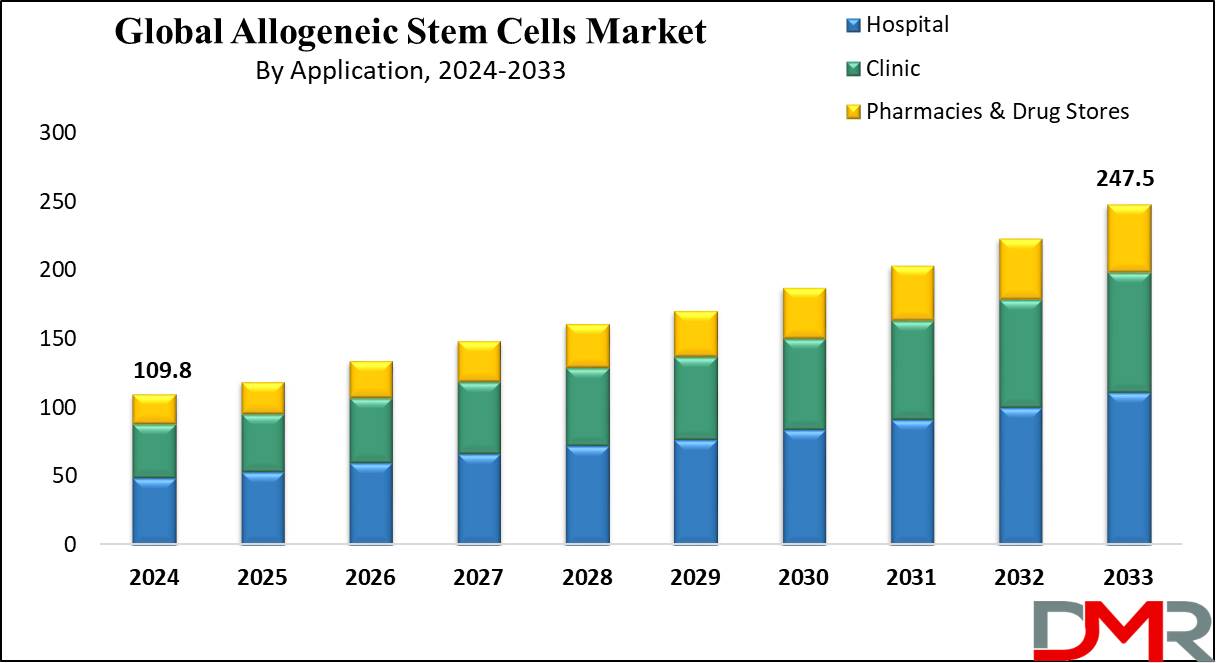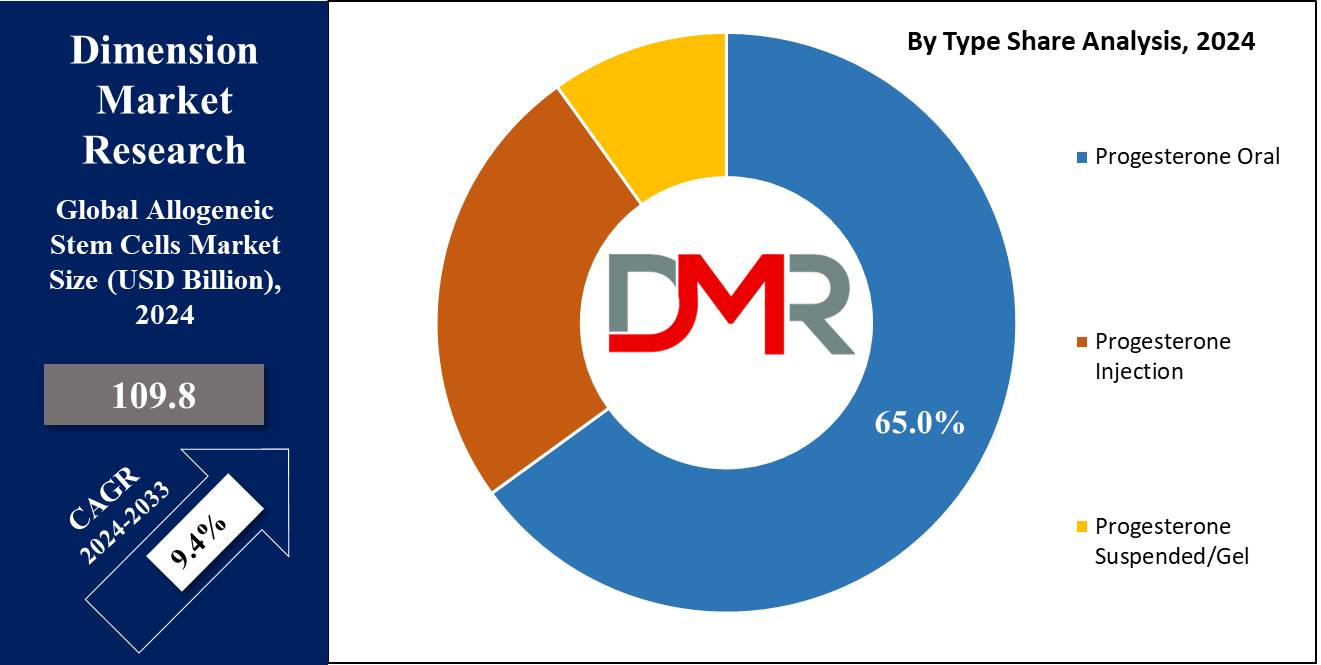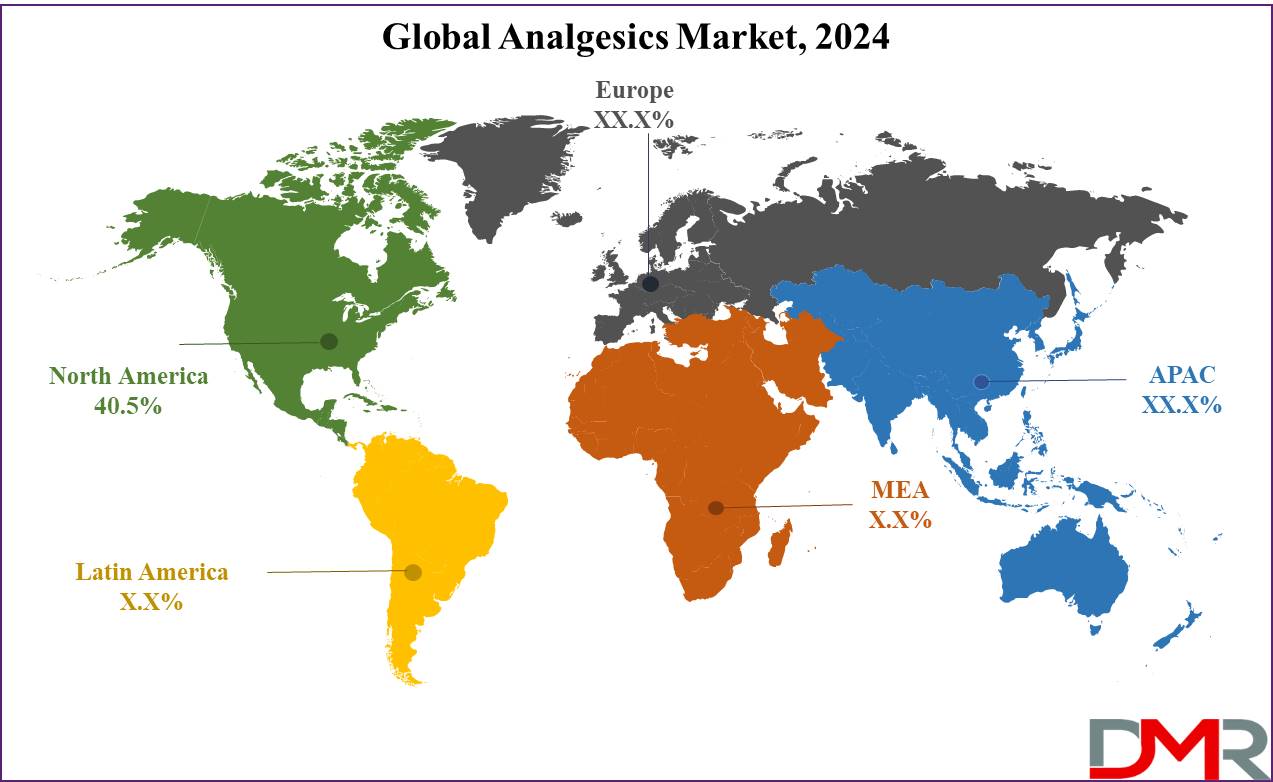Overview
Global Allogeneic Stem Cells Market size was valued at USD 258.3 Million in 2023 and it is further anticipated to reach a market value of USD 2421.0 Million in 2033 at a CAGR of 25.8%.

The growth of the allogeneic stem cell market is significantly driven by several key factors, including the rising prevalence of chronic diseases, advancements in stem cell research, and the increasing investment in regenerative medicine. The growing demand for personalized medicine is also emerging as a crucial driver, shaping the future expansion of the market.
Additionally, the ongoing rise in investment in regenerative medicine is expected to further propel the market's growth trajectory in the coming years. These factors collectively underscore the market's potential for significant development and innovation in the near future.
Global Allogeneic Stem Cells Market report offers an in-depth analysis of the target market, encompassing factual data like market size and shares at both regional and country levels, with CAGR and year-on-year growth rates. The report gives crystal view on market trends, opportunities, restrains and challenges along with competitive landscape analysis. Porters Five Forces, PESTLE, supply-chain analysis, Ecosystem analysis and Macro economic factors are included to cover all the target market aspects.
The research report on the global allogeneic stem cells market includes both qualitative as well as quantitative analysis of the market, company profiles of major market players along with complete product details and their competitive scenario. The report highly exhibits on the current and upcoming market trends and provides comprehensive analysis of all the factors that impact the global allogeneic stem cells market growth and size. The report will help companies to make better strategical business decisions.
Key Takeaways
- Market Size & Share: Allogeneic Stem Cells Market size was valued at USD 258.3 Million in 2023 and it is further anticipated to reach a market value of USD 2421.0 Million in 2033 at a CAGR of 25.8%.
- Type Analysis: Progesterone Injection dominated the market in 2023, accounting for approximately 58% of the market share.
- Application Analysis: Hospitals held approximately 65% of market share in 2023.
- Regional Analysis: North America leads the global allogeneic stem cells market, driven by strong economic expansion and rising investments.
- Challenges: Managing complications like graft-versus-host disease (GVHD) remains a critical challenge in the market.
- Opportunities: Development of off-the-shelf stem cell products and expanded clinical applications present major growth opportunities.
Use Cases
- Treatment for Blood Disorders: Allogeneic stem cells are commonly used in HSCT for treating various blood-related disorders such as leukemia, lymphoma, and myelodysplastic syndromes. Donor stem cells replace the patient’s diseased or damaged bone marrow.
- Treatment for Immune Deficiencies: Allogeneic stem cells are used to treat inherited immune system disorders like severe combined immunodeficiency (SCID) by rebuilding the patient’s immune system with healthy donor cells.
- Tissue Repair and Regeneration: Allogeneic stem cells are increasingly explored in regenerative medicine for their potential to repair or regenerate damaged tissues in conditions such as spinal cord injuries, heart disease, and neurodegenerative disorders.
- Cancer Treatment: In addition to replacing bone marrow, allogeneic stem cells can help in generating a graft-versus-tumor effect, where the donor immune cells attack remaining cancer cells, reducing the likelihood of cancer recurrence.
- Disease Modeling and Drug Testing: Allogeneic stem cells are used in research for modeling diseases, studying the effects of new drugs, and understanding disease mechanisms, which can lead to the development of new treatments.
Market Dynamics
Driver
The primary force driving allogeneic stem cell market growth is rising incidence of hematologic disorders like leukemia, lymphoma and aplastic anemia that require transplantation with allogeneic transplants as an integral option. Demand for stem cell therapies has seen significant global expansion due to increasing cases of illness among aging populations, as well as advances in stem cell harvesting, preservation and transplantation techniques that improve success rates and outcomes - further expanding this market. Investments by both the public and private sectors into research and therapy development contribute significantly towards providing more effective and accessible treatments.
Trend
One trend within the allogeneic stem cells market is diversifying therapeutic applications beyond hematologic conditions. Regenerative medicine has become a central focus, with allogeneic stem cells being tested against their potential to treat cardiovascular diseases, neurological disorders and autoimmune conditions. Furthermore, tissue engineering and repair research is expanding, offering hope to patients suffering from previously untreatable conditions. Furthermore, immunotherapy applications utilizing allogeneic stem cells have grown increasingly popular, particularly treatments which employ immune cells against cancer cells.
Restraint
Graft-versus-host disease (GVHD), an immune condition in which transplanted donor cells attack a recipient's body, poses a significant challenge to allogeneic stem cell transplantation applications and requires careful matching between donors and recipients that is often difficult. High costs also limit their application in developing regions where healthcare resources may be limited and regulatory hurdles impede adoption and approval processes for new treatments.
Opportunity
Allogeneic stem cell markets present ample potential, particularly within regenerative medicine. Current research using allogeneic stem cells for tissue regeneration and repair offers hope of creating life-changing therapies to treat heart disease, spinal cord injuries and neurodegenerative disorders. On top of this, developing allogeneic stem cell products off-the-shelf would make treatments more accessible while decreasing dependency on matching donors.
Personalized medicine - which offers personalized treatments tailored specifically to each patient's genetic profile - offers allogeneic stem cell applications a great opportunity for expansion. As technology and research advance, this market will experience substantial expansion due to innovations that lead to safer and more effective therapies.
The COVID-19 Pandemic & Recession: Impact on the Global Allogeneic Stem Cells Market:
Dimension Market Research has closely monitored the impact of COVID-19 and the recession on specific business segments, along with its short and long-term implications at both the global and regional levels. The initial outbreak of the COVID-19 pandemic caused unprecedented economic damage across numerous regions. The COVID-19 pandemic severely disrupted production, sales, and supply chain activities in developed as well as developing economies. Our report comprehensively covers the pre and post-COVID-19 impacts, along with an analysis of the recession's effects on the global allogeneic stem cells market.
Report Segmentation Analysis
Type Analysis
The Allogeneic Stem Cell Market can be categorized into various types based on the mode of administration of the associated treatments. The primary types include Progesterone Oral, Progesterone Injection, and Progesterone Suspended/Gel. Among these, Progesterone Injection dominated the market in 2023, accounting for approximately 58% of the market share.

This dominance is primarily due to the higher efficacy and faster absorption rates associated with injectable forms, making them the preferred choice in critical treatments like hematopoietic stem cell transplants. Progesterone injections are widely used in clinical settings for managing conditions that require precise hormone levels, particularly in reproductive medicine and certain cancer treatments. The injectable form’s ability to deliver consistent and controlled dosages directly into the bloodstream is a key factor in its widespread adoption. In contrast, while oral and suspended/gel forms offer more convenience and are commonly used in non-critical applications, their absorption rates and bioavailability are generally lower, limiting their use in more demanding clinical scenarios.
Application Analysis
The Allogeneic Stem Cell Market can be divided by application into hospitals, clinics and pharmacies & drug stores. As of 2023, hospitals held approximately 65% of market share. This can be attributed to allogeneic stem cell treatments such as Hematopoietic Stem Cell Transplantation (HSCT), which require special care from trained staff as well as advanced infrastructure and round-the-clock monitoring - something hospitals provide more effectively than any other setting.
Hospitals provide all of the facilities necessary to successfully oversee stem cell transplant procedures, as well as any potential complications like Graft-versus-Host Disease (GVHD). Their comprehensive care combined with multidisciplinary teams makes hospitals the obvious choice for these procedures; clinics and pharmacies may play supportive roles by handling follow up care or dispensing medication; however they cannot match hospital settings when it comes to scale of operations and quality care available there.
Market Analysis and Research Scope:
We provide Comprehensive insights about the allogeneic stem cells market along with crucial Key factors such as market size, market CAGR, market potential, recent developments, trends, opportunities, new technologies and innovations, recent product launches, restraints and market regulations. This report will help our clients immensely in getting an inside out view of the allogeneic stem cells market by providing them with the complete information about the allogeneic stem cells market and its prominent players with their competitive analysis and strategies.
The global allogeneic stem cells market research report provides accurate estimations for the forecast period 2024 to 2033 based on in-depth research and analysis through rigorous compilation of exhaustive primary and secondary research data. The final data will be carried out after verifying the in-house research analysis by the key opinion leaders of the global allogeneic stem cells market. Our triangulate research method minimizes error margin and gives holistic view on the report.
The Global Allogeneic Stem Cells Market Report is segmented on the basis of the following:
Type
- Progesterone Oral
- Progesterone Injection
- Progesterone Suspended/Gel
Application
- Hospital
- Clinic
- Pharmacies & Drug Stores
Geographical Segmentation of the Global Allogeneic Stem Cells Market:
North America leads the global allogeneic stem cells market, driven by strong economic expansion and rising investments. Furthermore, rising prevalence rates for chronic diseases also aid market expansion; this trend is anticipated to continue throughout the forecast period. Asia Pacific region stands to experience considerable allogeneic stem cell market expansion due to advancements in stem cell-based therapies as well as government initiatives encouraging regenerative medicine - two factors expected to speed market expansion there over time.

Region and Countries
North America
Europe
- Germany
- The U.K.
- France
- Italy
- Russia
- Spain
- Nordic
- Benelux
- Rest of Europe
Asia-Pacific
- China
- Japan
- South Korea
- India
- ANZ
- ASEAN
- Rest of Asia-Pacific
Latin America
- Brazil
- Mexico
- Argentina
- Colombia
- Rest of Latin America
Middle East & Africa
- Saudi Arabia
- UAE
- Israel
- South Africa
- Egypt
- Rest of MEA
The global allogeneic stem cells market research report provides competitive examination analysis of the leading players including company description, SWOT analysis, and financial information, exhaustive product portfolio with specifications, key business areas, market share analysis, acquisitions and mergers, and key developments, etc.
Competitive Landscape:
The global allogeneic stem cells market is highly fragmented due to the presence of several leading players. Prominent market players of the allogeneic stem cells market are exhibiting a keen interest towards the emerging economies such as China, India, etc. to enhance their revenue generating opportunities. The major market players are continuously focusing on their product branding, marketing and expansion of R&D, to increase their customer base. Exhaustive key vendor analysis has been done to meet the ever-changing needs of our clients and provide them with a complete overview on the competitiveness of the global allogeneic stem cells market.
Global Allogeneic Stem Cells Market Key Players:
Recent Developments
- Regenerative Medicine Expansion: There has been a notable expansion in the use of allogeneic stem cells in regenerative medicine. Researchers are increasingly exploring their potential to treat a wide range of conditions, including neurodegenerative diseases, heart disease, and autoimmune disorders. This expansion is driven by promising preclinical and early clinical trial results.
- Increased Investment in Stem Cell Research: There has been a surge in investments from both public and private sectors in stem cell research. These investments are fueling the development of new therapies and accelerating the transition of allogeneic stem cell treatments from the lab to clinical practice.
- Regulatory Approvals and Clinical Trials: Several new allogeneic stem cell therapies have entered or advanced through clinical trials, with some receiving regulatory approvals. These developments indicate a growing acceptance and recognition of the therapeutic potential of allogeneic stem cells, paving the way for their broader clinical application.
Report Details
| Report Characteristics |
| Market Size (2024) |
USD 316.3 Mn |
| Forecast Value (2033) |
USD 2,421.0 Mn |
| CAGR (2024-2033) |
25.8% |
| Historical Data |
2018 – 2023 |
| Forecast Data |
2024 – 2033 |
| Base Year |
2023 |
| Estimate Year |
2024 |
| Report Coverage |
Market Revenue Estimation, Market Dynamics, Competitive Landscape, Growth Factors and etc. |
| Segments Covered |
By Type (Progesterone Oral, Progesterone Injection, Progesterone Suspended/Gel) By Application (Hospital, Clinic, Pharmacies & Drug Stores) |
| Regional Coverage |
North America – The US and Canada; Europe – Germany, The UK, France, Russia, Spain, Italy, Benelux, Nordic, & Rest of Europe; Asia- Pacific– China, Japan, South Korea, India, ANZ, ASEAN, Rest of APAC; Latin America – Brazil, Mexico, Argentina, Colombia, Rest of Latin America; Middle East & Africa – Saudi Arabia, UAE, South Africa, Turkey, Egypt, Israel, & Rest of MEA
|
| Prominent Players |
Merck, Teva Generics, Zhejiang Medicine, Zhejiang Aisheng Pharmaceutical, Besins Healthcare, Virtus Pharmaceuticals, BionPharma |
| Purchase Options |
We have three licenses to opt for: Single User License (Limited to 1 user), Multi-User License (Up to 5 Users), and Corporate Use License (Unlimited User) along with free report customization equivalent to 0 analyst working days, 3 analysts working days and 5 analysts working days respectively. |